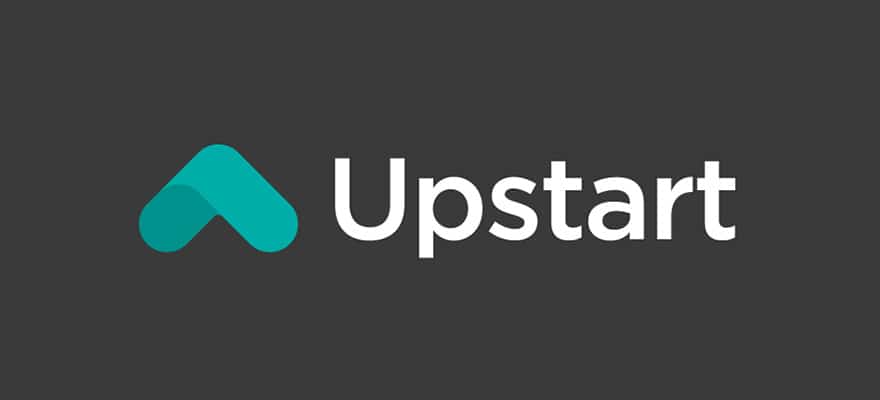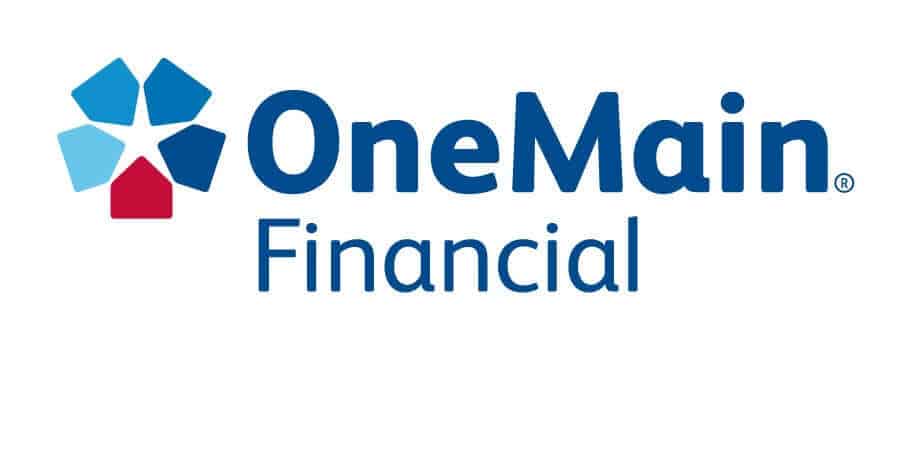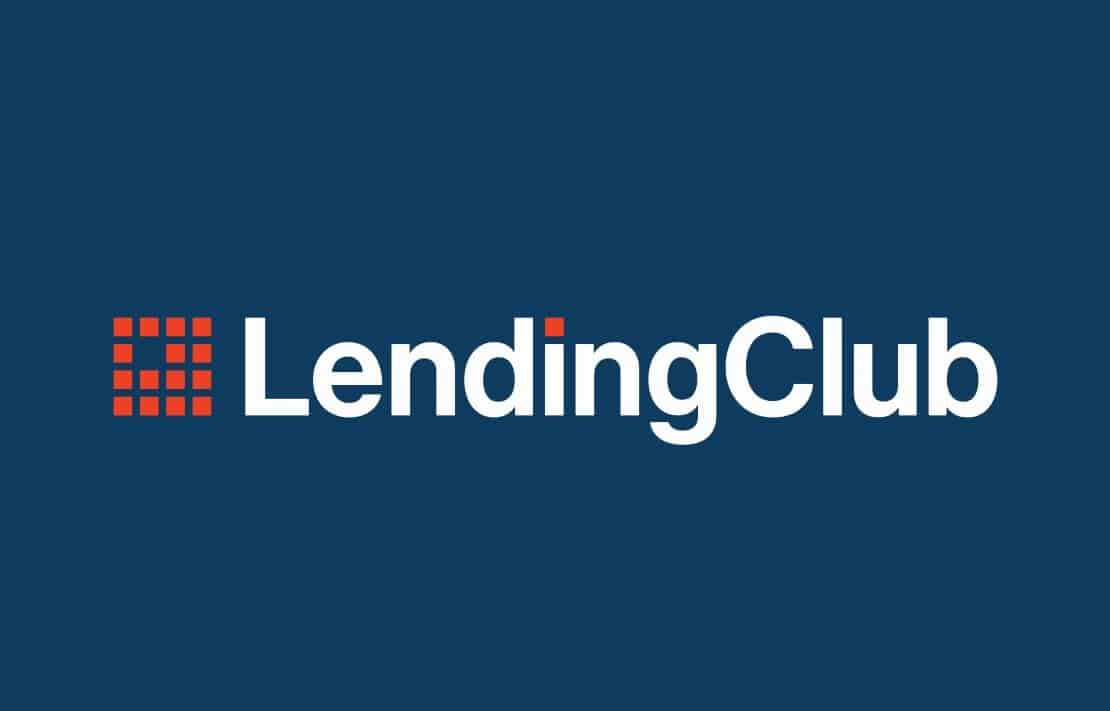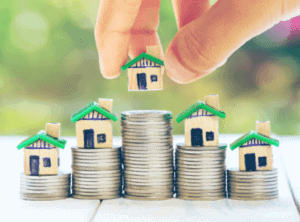Best Bad Credit Home Loans in 2021
If you’re in the lookout for a loan, but you’ve been turned away from lenders because of bad credit, then it might be worth considering a homeowner loan. You will, of course, need to own the property that you live in and have a minimum amount of equity to be eligible.
The amount that you can borrow will vary from lender-to-lender, although you should be prepared to pay higher-than-average APR rates if your credit is less than ideal.
In this article, we explore the pros and cons of taking out a bad credit home loan, how the application process works, whether or not they are suitable for your financing requirements, and more.
-
-
Apply for a Bad Credit Home Loan with our Recommended Providers:
Reviewers Choice
UpstartRatingAvailable Loan Amount$1,000 - $50,000Available Term Length3 or 5 yearsRepresentative APR7.69% to 36%Product Details- Best for individuals without a borrowing history or credit record
Pros- More than 70% of loan applications are processed automatically
- Overlooks FICO and embraces AI in determining credit score
- AI removes bias from the credit decision
- Imposes origination fees on loans
Key Facts- Advances loans to individuals without a credit history
- Reports lowest cases of loan defaults
- Has a higher than the banks' average credit approval rate – 73%
One Main FinancialRatingAvailable Loan Amount$1500 - $20,000Available Term Length24 monthsRepresentative APR16% to 35.99%Product Details- Suitable for individuals with the worst credit scores
Pros- Advances credit to individuals with lowest/non-existent credit scores
- Maintains a wide presence throughout the country
- Maintains higher loan limits of up to $20,000
- Hard credit inquiry hurts your score
Key Facts- Lends to high-risk borrowers
- Clear loan terms with no prepayment fees
- Nationwide branches offer one-on-one interactions
Lending ClubRatingAvailable Loan Amount$5000 - $40,000Available Term Length3 yearsRepresentative APR6% and 35.89%Product Details- Best P2P lender for bad credit borrowers
Pros- Long term loans of up to 60 months
- Lenders willing to advance you loans despite the low credit score
- Soft credit search doesn’t hurt your credit score
- Imposes an origination fees of up to 6%
Key Facts- Maintains the largest base of lenders both individuals and institutions
- Presents you with several loan options to choose from
- The loan terms – APR and term length are dependent on your credit score
Did You Know? Although specialist lenders will consider your application for a bad credit home loan, you need to remember that you are required to put the property up as collatoral. This means that you could lose your home in the event of a default.What is a Bad Credit Home Loan?
A bad credit home loan is a financing product that allows you to borrow money against the value of your home. In this sense, it’s a secured loan – as you will need to put the asset up as collateral. This means that you will always stand the risk of losing the property if you fall behind on your repayments.
The application process works largely the same as any other financing product, as you can complete the end-to-end process online. You should expect a much longer approval process in comparison to the likes of personal loans and payday loans.
This is because the value of homeowner loans are usually much larger, so the lender is required to perform enhanced due diligence. In order to qualify for a home loan, you will need to own the property outright or have a mortgage in your name. You also need to have equity in the property. In terms of how much you can borrow, this is based on the LTV (Loan-to-Value) that the lender is willing to facilitate.
Although we’ll cover this in more detail further down, the LTV is taken against the current market value of your home. If you still have a mortgage on the property, you will need to subtract the outstanding balance from the value of the home. Finally, the interest on your bad credit home loan can be fixed or variable. If it’s the latter, the interest rate could increase during the course of the loan.
Did You Know? Bad credit homeowners loans usually come with more favorable interest rates in comparison to payday loans and bad credit personal loans. This is because the lender has the security of your property, so they are more willing to offer more competitive APR rates.Pros and Cons of Bad Credit Home Loans
Pros:
- Borrow money against the value of your property
- Suitable even if you still have a mortgage on your home
- Bad credit profiles are considered as lenders have the security of your property
- Typically come with lower interest payments as the loan is secured
- Repay the money over a number of years
- Complete the entire loan application online
Cons:
- Interest payments will still be higher-than-average as you have bad credit
- You stand the risk of losing your home in the event that you default
- Some bad credit home loans come with variable interest, so the APR could increase
How do Bad Credit Home Loans Work?
There is much to learn about bad credit homeowners loans, as the process can differ from that of a conventional personal loan. This mainly centers on your equity on the property and the LTV, which we will now explain in more detail.
Calculating Your Equity on a Homeowners Loan
The LTV on homeowner loans refers to the amount of money that the lender is willing to lend you, based on the value of your property. The exact calculation will depend on whether you own the home outright, or if you still have a mortgage outstanding. This is because lenders look at the equity you have on the home, and not just the current value.
Example 1: You Still Have a Mortgage
- Let’s say that you purchased the property four years ago when it was worth $200,000.
- You have paid a total of $50,000 off your mortgage so far (including downpayment)
- The current value of your home now stands at $250,000.
- In order to calculate the equity, we need to subtract the outstanding mortgage balance from the current market value of the home.
- This means that your equity is $100,000 ($250,000-$150,000).
Example 2: You Own the Home Outright
- Let’s say that you purchased an apartment 20 years ago when it was worth $35,000.
- You successfully paid off the mortgage 5 years ago, so you now own the apartment outright.
- At today’s market value, your apartment is now worth $100,000.
- As you own 100% of the property, your equity is $100,000.
As you can see from the above examples, the amount of equity that you have available to you will depend on whether or not you still have a mortgage.
LTV on a Home Loan
So now that you know how your equity is calculated, we are now going to show you how to assess how much you can borrow through a bad credit home loan. Most lenders will publish a maximum LTV value on their website, so you simply need to calculate this against your equity.
Did You Know? There is no guarantee that you will get the maximum LTV amount offered by the lender. As we cover in more detail further down, home loan providers will also need to look at other metrics when assessing how much to lend you, such as your creditworthiness and incomeCalculating the LTV Against Your Equity
- Let’s say that the home loan provider offers an LTV of 70%.
- The equity on your home is $100,000.
- This means that you can borrow up to $70,000 against the value of your home.
How Much do Bad Credit Home Loans Cost?
One of the most important factors to consider before applying for a bad credit home loan is how much it is going to cost you. Not only does this include interest that can be either fixed or variable, but also origination fees. Some homeowner loan providers will also charge additional fees to cover enhanced due diligence costs. For example, this might include a fee to value the home, or to search the land registry.
Here’s a breakdown of the fees and charges that you need to be made aware of prior to taking out a bad credit home loan.
Fixed/Variable Interest Rates
First and foremost, you will need to pay interest on the money that you borrow. Unlike personal loans and payday loans, which always come with a fixed rate of interest, homeowner loans can be variable.
- Fixed Interest: A fixed interest rate means that the APR on your homeowner loan will never change. This means that your monthly repayments will always be at the same amount. A fixed interest agreement allows you to budget each month, as you always know exactly how much you need to put to one side.
- Variable Interest: A variable interest rate can change at any given time. Most lenders will give you at least 30 days notice if the rate is to change, sometimes more. You will normally get a lower rate at first when opting for a variable APR. However, if the Federal Reserve, or your respective central bank, heightens their interest rates, the APR on your loan will likely follow suit.
You might not get a choice between fixed and variable interest on your home loan, as this is usually determined by the lender itself. You just need to make sure that you know exactly what type of interest you’re on before signing the loan agreement.
Origination Fee
In a similar nature to personal loans, most bad credit home loans will come with an origination fee. This is charged to cover the costs of arranging the loan. This might include the costs associated with:
- Performing a market valuation on your property
- Enhanced due diligence on your creditworthiness and overall financial standing
- Checking the land registry to ensure your name is listed on the property
- Legal fees
The average origination fee in the US amounts to 0.5-1%, although this will vary from lender-to-lender. If your credit profile is less than ideal, expect to pay more. The fee is subtracted from the amount you receive in funding, and calculated against the total value of the loan.
For example:
- You borrow $50,000 from a home loan provider
- The origination fee is 2%
- This amounts to an origination fee of $1,000
- You will only receive $49,000, even though the loan agreement is for $50,000
Am I Suitable for a Bad Credit Home Loan?
Although specialist bad credit lenders are happy to consider applications from credit profiles of all shapes and sizes, this isn’t to say that you are guaranteed to be approved. On the contrary, the lender will consider a range of factors when assessing your application.
Below we have listed the main metrics that bad credit home loan providers will look when you apply.
Name Listed on Property
Your name needs to listed on the property deeds to be eligible for a homeowner loan. Some lenders will consider your application if you part-own a property. However, the amount that you can borrow will be based on your proportion of equity and not the overall equity on the home.
The Home Must Have Equity
You will only be eligible for a bad credit home loan if the property in question has equity. For example, if you purchased a home in the midst of the financial crisis in 2008, it is likely that the value of the property went on a downward spiral for a number of years.
This is known as ‘negative equity’, meaning that the size of your mortgage is higher than the value of your home. In this instance, you wouldn’t be eligible for a home loan.
Debt-to-Income Ratio
When it comes to affordability, the bad credit lender will look at your debt-to-income ratio. This looks at the ratio between your annual income and the size of your outstanding debts, excluding your mortgage.
For example, if you currently earn $60,000 per year and you have $15,000 worth of debts outstanding, your debt-to-income ratio would be 25%. Lenders rarely accept applicants that have a debt-to-income ratio of 50% or more, even if you’re putting your home up as collateral.
Historical Relationship With Debt
If you’re in the lookout for lenders that specialize in bad credit, then it’s likely that you’ve previously fallen behind on debt repayments. While this won’t necessarily hinder your chances of getting a home loan, a long-standing history of missed payments and defaults can go against you. This is especially the case if you have a bankruptcy order on your credit file.
Age, Residency and Checking Account
You will need to be aged at least 18 years old to get a bad credit home loan (higher in some states), and be a permanent US resident. You will also need to have a valid US checking account that has the capacity to install electronic debit agreements.
Consequences of Defaulting on a Bad Credit Home Loan
There is no getting away from the fact that falling behind on a home loan can lead to severe consequences. This is because you will have put your property up as collateral, meaning that the lender has the legal remit to seize your home in the event of a default.
- If you miss a payment you will likely pay a late payment fee. The specific amount will vary depending on the lender, as well as the state in which you are located.
- If you miss multiple payments, typically three in a row, the lender will likely mark the loan as a default.
- If the lender is still unable to collect what you owe, they will have the legal right to start a repossession order.
- This means that your home could be repossessed.
Ultimately, bad credit home loans do come with their benefits, such as lower APR rates and access to financing when you’ve been turned away elsewhere. However, you need to ensure that you are 100% confident that you’ll be able to meet your repayments each and every month. If not, you shouldn’t take out a loan against the value of your home.
Making Your Home Loan Repayments
When it comes to making your home loan repayments, the process works largely the same as a personal loan. This is because your payments will be taken on the same date of each month. With that said, the size of your repayments can vary if you’re on a variable rate.
In most cases, you will need to set up an electronic debit agreement. This means that the lender will take your monthly repayments directly from your US checking account. This ensures that you never miss a payment, on the proviso that you have enough cash in your account.
It might be worth opening a separate bank account that is to be used exclusively for making your monthly repayments. As soon as you get paid, you can then transfer the respective amount to ensure you always stay on top of your home loan.
How do I Apply for a Bad Credit Home Loan?
So now that you know the ins and outs of how a home loan works, we are now going to give you a step-by-step guide on the application process. Although this can vary slightly depending on the lender, the process remains largely the same.
Step 1: Choose a Bad Credit Home Loan Provider
Your first port of call will be to locate a home loan provider that meets your personal financing needs. At the forefront of this should be a lender that specializes in bad credit profiles. Before going any further, you should explore the minimum eligibility requirements that the lender publishes on its site, as well as the maximum LTV on offer.
You should also spend some time assessing the types of interest rates that the lender charges. With that said, you won’t know how much you will be required to pay until you actually apply.
Step 2: Get an Estimated Property Value
Once you’ve found a lender, you will need to head over to its website to begin the application process. You will initially need to enter the address of your property. This will allow the lender to assess the estimated market value of your home. This will then allow you to evaluate how much you can borrow, based on both the LTV and the size of your equity.
Step 3: Complete Application Form
You will now need to fill out an application form. This works in a similar way to any other online loan application, meaning that you’ll need to enter some personal and financial information.
Personal details will include:
- Full Name
- Date of Birth
- Home Address (if different from the property you wish to borrow the funds against)
- Social Security Number
- Contact Details
Financial details will include:
- Employment Status
- Name and Address of Employer
- Time at Employer
- Annual Salary (Including Commission, Bonuses, etc.)
- Current Debt Obligations
- Estimated FICO Score
You will also need to enter details about the property. This will include details on the ownership of the home, as well as whether or not you still have a mortgage.
Step 4: Pre-Approval Offer and Document Upload
Once you have completed the online application form, the lender will cross-reference your data against third-party sources. This will include a hard credit inquiry, meaning that the lender will extract your historical relationship with debt from at least one of the main three credit bureaus.
If the lender deems that you have the right credit profile for a home loan, you will then be able to view your pre-approval offer. This includes the amount that the lender is able to offer you, and at what rates.
Did You Know? Even if you are pre-approved for a bad credit home loan, this isn’t to say that you are guaranteed to get the loan. The lender will still need to perform lots of due diligence on you. This also means that your pre-approval interest rates might go up.If you are happy with the pre-approval offer, the lender will then ask you to upload a range of documents. This is likely to include:
- A government-issued ID (passport or driver’s license)
- Proof of address (recent utility bill, property tax statement, bank statement, etc.)
- Proof of property ownership
- Mortgage documents (if applicable)
- Recent pay stubs to verify your income
Step 5: Enter Bank Details
You will also be asked to enter your US checking account details. This is the account that your home loan funds will be deposited into. This is also the account that your electronic debit agreement will be attached to.
Step 6: Sign Digital Loan Agreement
Once you have uploaded your documents and entered your bank account details, the lender will then perform some due diligence on you as an applicant. They will also need to verify your documents, and evaluate the current market value of your home. All being well, the lender will contact you within 2-5 weeks with a solid loan offer. This will outline key information linked to the loan agreement, such as:
- Size of the loan
- Fixed or variable interest rate
- Origination fee
- Term of the loan
- What your monthly repayments will amount to
- Policy on late payments and repossession
You are strongly advised to get a legal professional to read through the loan agreement. You could lose your home in the event of a default, so you need to have a firm understanding of the terms of the loan. Once you’ve had everything checked out and you’re happy to proceed, you will need to sign the loan agreement. The lender will then process the loan and deposit the funds into your US checking account.
Conclusion
By reading our guide all of the way through, you should now know the ins and outs of how bad credit home loans work. It’s super-important that you understand the consequences of falling behind on your loan, as it could lead to your property being repossessed.
As long as you are 100% sure that you can afford to make your repayments each and every month, homeowner loans can be an attractive source of finance.
This is because you can use the equity that you’ve already built up on the home to obtain more favorable interest rates. It also gives you an alternative option when you’ve been turned away from other lenders.
Glossary of Loan Terms
FAQs
How much can I borrow from a bad credit home loan?
Lenders will usually stipulate an LTV (Loan-to-Value) ratio when determining how much you can borrow. This is a percentage of the equity that you currently have on the property. You won’t necessarily get the full amount though, as lenders also take your creditworthiness and income into account.
What happens if I default on my bad credit home loan?
When you miss a payment, you will likely be charged a late payment fee. If you then cover the short-fall, nothing else will happen. However, if your late payments then turns into a default, the lender might be able to repossess your home.
How long does it take to get a bad credit home loan?
While the likes of personal loans and payday loans can be processed in 1-2 working days, homeowners loan take considerably longer. You should expect the process to take anywhere between 2-5 weeks.
Do I need to supply supporting documents when applying for a bad credit home loan?
Yes, all bad credit home loan applications will require you to upload a range of documents. This will include documents verifying your income, identity, and ownership of the property.
Kane Pepi
View all posts by Kane PepiKane holds academic qualifications in the finance and financial investigation fields. With a passion for all-things finance, he currently writes for a number of online publications.
WARNING: The content on this site should not be considered investment advice. Investing is speculative. When investing your capital is at risk. This site is not intended for use in jurisdictions in which the trading or investments described are prohibited and should only be used by such persons and in such ways as are legally permitted. Your investment may not qualify for investor protection in your country or state of residence, so please conduct your own due diligence. Contracts for Difference (“CFDs”) are leveraged products and carry a significant risk of loss to your capital. Please ensure you fully understand the risks and seek independent advice. This website is free for you to use but we may receive commission from the companies we feature on this site.
Copyright © 2025 | Learnbonds.com
We use cookies to ensure that we give you the best experience on our website. If you continue to use this site we will assume that you are happy with it.Scroll Up

 Reviewers Choice
Reviewers Choice 




 When it comes to making your home loan repayments, the process works largely the same as a personal loan. This is because your payments will be taken on the same date of each month. With that said, the size of your repayments can vary if you’re on a variable rate.
When it comes to making your home loan repayments, the process works largely the same as a personal loan. This is because your payments will be taken on the same date of each month. With that said, the size of your repayments can vary if you’re on a variable rate.
